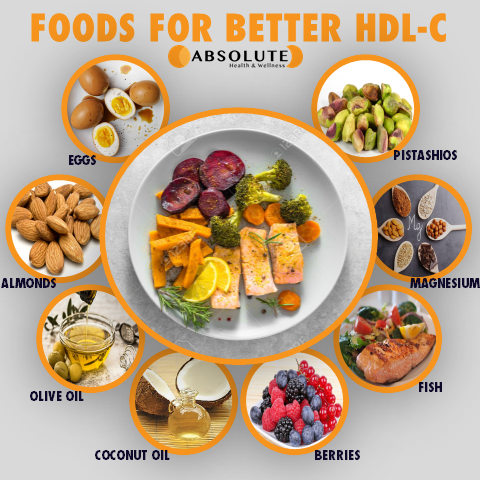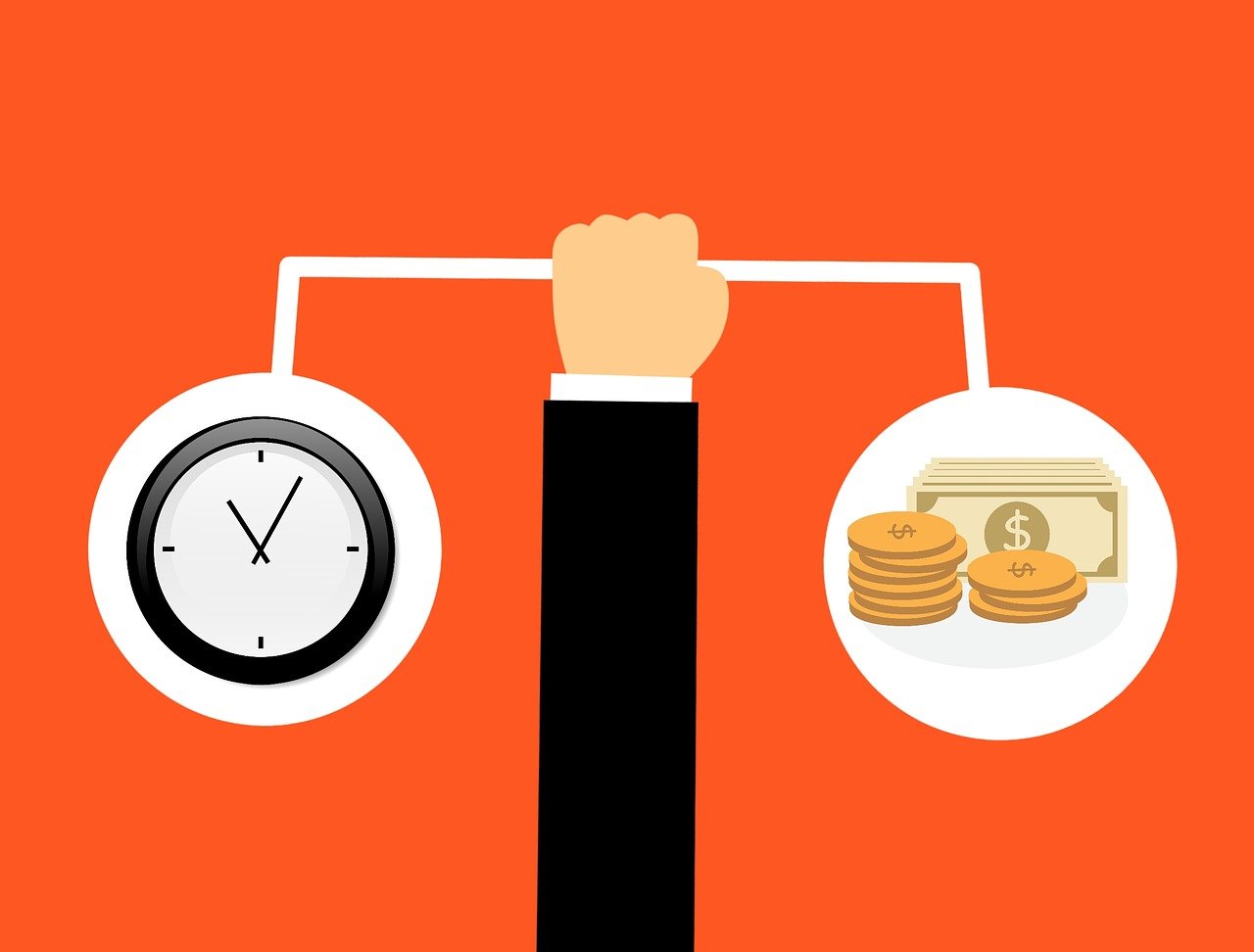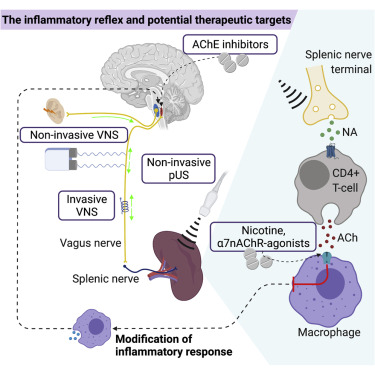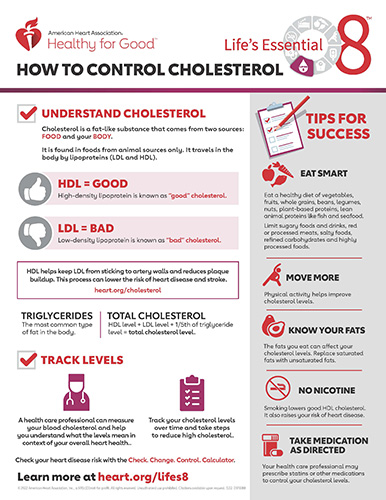Introduction
Cholesterol management is a crucial aspect of cardiovascular health, and statin medications have long been a trusted tool in lowering cholesterol levels. However, an emerging body of research highlights the significant role that exercise can play in complementing statin therapy. In this article, we will explore how physical activity, when combined with statin medication, can enhance cholesterol management and overall cardiovascular well-being.
Cholesterol management stands as a cornerstone of cardiovascular health, and for decades, statin medications have been at the forefront of this battle. Their effectiveness in reducing cholesterol levels is well-documented and has saved countless lives. However, as medical science continues to evolve, an exciting chapter is emerging—one that underscores the immense potential of exercise in tandem with statin therapy.
In this article, we delve into the intriguing synergy that arises when physical activity joins forces with statin medication in the realm of cholesterol management. It’s essential to recognize that while statins are formidable in lowering cholesterol, they are not a singular solution. They work optimally when integrated into a holistic approach to heart health, and that’s where exercise steps in.
Physical activity, whether in the form of brisk walking, jogging, swimming, or other enjoyable activities, carries a host of benefits for cardiovascular health. Regular exercise has the power to increase HDL (high-density lipoprotein) cholesterol, the “good” cholesterol that helps remove excess LDL cholesterol from the bloodstream. Moreover, it can contribute to weight management, blood pressure control, and improved insulin sensitivity—all factors that influence cholesterol levels and overall heart health.
But the magic happens when exercise and statin therapy join hands. Research indicates that the combination of these two strategies can lead to even more significant reductions in LDL cholesterol and improvements in other cardiovascular risk factors. This synergy enhances the overall efficacy of cholesterol management and can provide individuals with a sense of empowerment and control over their heart health.
Throughout this article, we’ll explore the science behind this dynamic partnership, offer practical tips for incorporating exercise into your daily routine, and highlight the numerous advantages that stem from this integrated approach. By understanding the potential of exercise in conjunction with statin medications, you’ll gain valuable insights into optimizing your cholesterol management and fostering a robust foundation for long-term cardiovascular well-being.
Don’t stop here; you can continue your exploration by following this link for more details: Are investments in disease prevention complements? The case of …
Cholesterol is a fatty substance found in the blood, and while the body needs cholesterol for various functions, excessive levels of LDL (low-density lipoprotein) cholesterol, often referred to as “bad” cholesterol, can contribute to atherosclerosis—a condition where arteries become narrowed and hardened. This can increase the risk of heart attacks and strokes.
Statin medications, such as atorvastatin (Lipitor) and simvastatin (Zocor), are prescribed to lower LDL cholesterol levels. They work by inhibiting an enzyme in the liver that plays a central role in cholesterol production.
Cholesterol, an essential but often misunderstood substance, plays a crucial role in our body’s functions. It is vital for the production of cell membranes, hormones, and vitamin D, among other essential processes. However, it’s the balance of cholesterol that is critical for our well-being.
Within the realm of cholesterol, LDL (low-density lipoprotein) cholesterol has garnered notoriety as the “bad” counterpart. When LDL cholesterol levels become excessive, it can set the stage for atherosclerosis—a condition characterized by the gradual narrowing and hardening of arteries. This process is akin to the slow accumulation of debris within a pipe, leading to restricted blood flow. Ultimately, this restriction can increase the risk of life-threatening events such as heart attacks and strokes.
This is where statin medications, such as atorvastatin (Lipitor) and simvastatin (Zocor), come into play as invaluable tools in the fight against cardiovascular disease. These medications have a singular mission: to reduce LDL cholesterol levels in the bloodstream, thus mitigating the risk of atherosclerosis-related events.
The mechanism through which statins achieve this goal is elegantly simple yet highly effective. They work by inhibiting an enzyme in the liver known as HMG-CoA reductase. This enzyme plays a central role in the production of cholesterol within the body. By blocking HMG-CoA reductase, statins reduce the liver’s ability to produce cholesterol, leading to lower LDL cholesterol levels in the bloodstream.
While statins primarily target LDL cholesterol, they may also have secondary effects on other aspects of lipid metabolism, such as increasing levels of HDL (high-density lipoprotein) cholesterol, often referred to as “good” cholesterol. This can further contribute to cardiovascular health by promoting the removal of cholesterol from the bloodstream.
In the realm of cardiovascular care, statins have emerged as a cornerstone of treatment. Their ability to reduce LDL cholesterol levels and mitigate the risk of atherosclerosis-related events has revolutionized the management of heart health. However, it’s important to recognize that the decision to prescribe statins should be individualized, with healthcare providers considering a patient’s overall cardiovascular risk profile.
In conclusion, cholesterol is a multifaceted substance, essential for various bodily functions. However, maintaining a delicate balance is paramount, as excessive levels of LDL cholesterol can contribute to atherosclerosis and increase the risk of heart attacks and strokes. Statin medications, through their inhibition of cholesterol production, serve as powerful allies in safeguarding cardiovascular health and have become integral components of modern heart care.
Should you desire more in-depth information, it’s available for your perusal on this page: Are investments in disease prevention complements? The case of …

While statins are effective in reducing cholesterol levels, physical activity offers a complementary approach to cholesterol management. Here’s how exercise can enhance the effects of statin therapy:
While statins undoubtedly play a pivotal role in reducing cholesterol levels and improving cardiovascular health, it’s essential to recognize that physical activity offers a complementary and multifaceted approach to cholesterol management. Here’s how regular exercise can synergize with statin therapy to enhance its effects and contribute to your overall well-being:
Amped-Up LDL Reduction: Statins primarily target low-density lipoprotein (LDL) cholesterol, often referred to as the “bad” cholesterol. Physical activity provides an extra boost by helping to lower LDL levels naturally. Regular exercise promotes the breakdown and removal of LDL cholesterol from the bloodstream, which can further reduce the risk of atherosclerosis and cardiovascular events when combined with statin therapy.
Elevated HDL Levels: High-density lipoprotein (HDL) cholesterol, known as the “good” cholesterol, plays a protective role in heart health. Exercise has been shown to increase HDL levels, enhancing its ability to transport cholesterol away from arteries and to the liver for disposal. This rise in HDL cholesterol complements the LDL-lowering effects of statins, creating a more balanced cholesterol profile.
Reduced Triglycerides: Elevated triglyceride levels are another risk factor for heart disease. Exercise can help lower triglycerides by increasing the breakdown of fats in the bloodstream. This reduction in triglycerides, when combined with statin therapy, contributes to a comprehensive approach to cholesterol management.
Improved Overall Cardiovascular Fitness: Beyond its direct effects on cholesterol, exercise strengthens the heart and improves overall cardiovascular fitness. This means that your heart becomes more efficient at pumping blood, oxygenating your body, and supporting healthy blood vessel function. As a result, your cardiovascular system is better equipped to withstand the challenges posed by high cholesterol levels.
Weight Management: Maintaining a healthy weight is closely tied to cholesterol control. Regular exercise supports weight loss or weight maintenance efforts, which can have a significant impact on your cholesterol profile. Shedding excess pounds through physical activity can lower LDL cholesterol levels and reduce the risk of heart disease.
Enhanced Statin Tolerance: Some individuals may experience muscle-related side effects while taking statins. Engaging in regular exercise can help improve muscle strength and endurance, potentially reducing the risk of muscle discomfort associated with statin therapy. It can also contribute to overall well-being, making it easier to tolerate medications.
Stress Reduction: Exercise is a natural stress reliever. Lowering stress levels can have indirect benefits for cholesterol management, as chronic stress is associated with unhealthy lifestyle choices that can lead to elevated cholesterol levels.
In summary, while statins are a valuable tool in cholesterol management, they are even more effective when combined with regular physical activity. Exercise not only complements the cholesterol-lowering effects of statin therapy but also provides a broad range of cardiovascular benefits. Whether it’s through aerobic activities like jogging, swimming, or cycling or resistance training exercises, incorporating regular exercise into your routine can amplify the positive impact on your heart health and overall well-being.
To delve further into this matter, we encourage you to check out the additional resources provided here: Are investments in disease prevention complements? The case of …

Exercise, particularly aerobic activities like brisk walking, running, and cycling, can lower LDL cholesterol levels. Regular physical activity promotes the breakdown of LDL cholesterol in the bloodstream and enhances the removal of cholesterol from the body.
Exercise, with a focus on aerobic activities like brisk walking, running, and cycling, offers a multifaceted approach to improving cholesterol levels and overall cardiovascular health. Here’s how regular physical activity contributes to better cholesterol management and heart health:
Lowering LDL Cholesterol: Engaging in aerobic exercises has been shown to effectively reduce LDL (low-density lipoprotein) cholesterol levels, often referred to as “bad” cholesterol. As you exercise, your muscles require energy, which prompts the liver to pull LDL cholesterol from the bloodstream to supply this energy.
Increasing HDL Cholesterol: Physical activity can also lead to an increase in HDL (high-density lipoprotein) cholesterol, known as “good” cholesterol. HDL cholesterol plays a crucial role in transporting excess cholesterol from the bloodstream to the liver for removal, thus reducing the risk of plaque buildup in the arteries.
Enhancing Blood Vessel Health: Regular exercise improves the flexibility and function of blood vessels. It helps prevent the stiffening and narrowing of arteries, reducing the risk of atherosclerosis, which is the buildup of fatty deposits in artery walls.
Aiding Weight Management: Exercise contributes to weight control, which is closely linked to cholesterol management. Maintaining a healthy weight can help reduce LDL cholesterol levels, as excess body fat is associated with higher cholesterol levels.
Promoting Overall Cardiovascular Health: Physical activity supports various aspects of heart health, including reducing inflammation, lowering blood pressure, and enhancing cardiac function. These benefits collectively reduce the risk of heart disease, a condition closely tied to high cholesterol levels.
Encouraging Lifestyle Improvements: Engaging in regular exercise often goes hand in hand with other heart-healthy lifestyle changes. Individuals who commit to a fitness routine are more likely to adopt healthier dietary habits and quit smoking, all of which contribute to improved cholesterol profiles.
Stress Reduction: Exercise is a natural stress reliever, and chronic stress can negatively impact cholesterol levels. By reducing stress, physical activity indirectly supports better cholesterol management.
Enhanced Insulin Sensitivity: Aerobic exercise improves the body’s sensitivity to insulin, which can be beneficial for individuals with diabetes or those at risk of developing the condition. Improved insulin sensitivity can help regulate blood sugar levels and reduce the risk of diabetes-related cholesterol issues.
It’s important to note that the benefits of exercise on cholesterol levels are dose-dependent, meaning that the more you engage in regular physical activity, the greater the improvements you can expect. However, even moderate levels of exercise can have a positive impact on cholesterol and overall cardiovascular health.
To maximize these benefits, aim for at least 150 minutes of moderate-intensity aerobic exercise or 75 minutes of vigorous-intensity exercise per week, as recommended by health guidelines. Always consult with your healthcare provider before starting a new exercise program, especially if you have underlying health conditions or are taking medications.
Looking for more insights? You’ll find them right here in our extended coverage: Differential Effects of Aerobic Exercise, Resistance Training and …

High-density lipoprotein (HDL) cholesterol is often referred to as “good” cholesterol because it helps remove LDL cholesterol from the blood vessels. Exercise has been shown to increase HDL cholesterol levels, further contributing to overall cholesterol balance.
High-density lipoprotein (HDL) cholesterol, often referred to as “good” cholesterol, plays a vital role in maintaining cardiovascular health by helping to remove excess low-density lipoprotein (LDL) cholesterol from the bloodstream. Its function is akin to a diligent housekeeper, clearing away the “bad” cholesterol buildup in the arteries. While genetics partly influence HDL levels, lifestyle choices, particularly exercise, can significantly impact and elevate HDL cholesterol levels, providing a host of benefits for your cardiovascular system and overall well-being.
Exercise, in all its forms, offers a multifaceted approach to improving your HDL cholesterol levels. Here’s how:
Aerobic Exercise: Activities like jogging, cycling, swimming, and brisk walking can significantly boost HDL cholesterol. Aerobic exercises increase your heart rate and breathing, prompting your body to utilize fat as an energy source. This process raises HDL levels, helping to remove excess LDL cholesterol from your bloodstream.
Strength Training: Resistance training, such as weightlifting and bodyweight exercises, not only builds muscle but also contributes to elevating HDL cholesterol. As your muscles grow, they become more efficient at metabolizing and utilizing fats, including LDL cholesterol, for energy.
Weight Management: Maintaining a healthy weight through exercise can positively affect your cholesterol profile. Shedding excess pounds can lead to an increase in HDL cholesterol levels and a decrease in LDL cholesterol, reducing your overall cardiovascular risk.
Consistency Matters: Regular physical activity is key. Consistency in your exercise routine ensures the sustained benefits of higher HDL cholesterol levels. Aim for at least 150 minutes of moderate-intensity aerobic activity or 75 minutes of vigorous-intensity activity per week, in accordance with health guidelines.
Combining Aerobic and Strength Training: A well-rounded exercise routine that combines aerobic and strength-training elements can provide comprehensive benefits for cholesterol management. It not only boosts HDL cholesterol but also improves overall cardiovascular fitness and helps prevent muscle loss, which can be particularly beneficial as we age.
Other Lifestyle Factors: Exercise often goes hand in hand with other heart-healthy choices, such as adopting a balanced diet and quitting smoking. These lifestyle modifications synergistically enhance the positive effects on HDL cholesterol levels and cardiovascular health.
By embracing a physically active lifestyle, you not only bolster your HDL cholesterol levels but also reap a multitude of health rewards. Improved cardiovascular fitness, reduced risk of heart disease, weight management, and enhanced overall well-being are just a few of the benefits that regular exercise offers. So, lace up those sneakers, find an activity you enjoy, and take steps toward better heart health through the power of exercise.
To expand your knowledge on this subject, make sure to read on at this location: Statin Alternatives: How Other Drugs Can Help Lower Your …

Regular exercise helps individuals maintain a healthy weight or lose excess pounds. Weight management is essential for cholesterol control, as obesity is a risk factor for elevated cholesterol levels.
Regular exercise plays a multifaceted role in promoting overall health and well-being, and one of its pivotal aspects is its impact on weight management and cholesterol control. Let’s explore this synergy in more detail.
Caloric Expenditure: Exercise is a potent tool for burning calories. Engaging in physical activity increases your energy expenditure, helping you create a calorie deficit when combined with a balanced diet. This calorie deficit is crucial for weight management, as it can lead to the gradual shedding of excess pounds. As you lose weight through regular exercise, you’re likely to see improvements in your cholesterol profile, particularly in terms of lowering LDL (low-density lipoprotein) cholesterol, which is associated with atherosclerosis.
Lean Muscle Mass: Exercise not only helps reduce body fat but also promotes the development and maintenance of lean muscle mass. Muscle tissue is metabolically active, meaning it burns more calories at rest compared to fat tissue. As you build and preserve lean muscle through resistance training and aerobic exercise, your body’s metabolic rate increases. This can contribute to more effective long-term weight management and improved cholesterol levels.
Insulin Sensitivity: Physical activity enhances insulin sensitivity, which is critical for both weight management and cholesterol control. When your body becomes more sensitive to insulin, it can more efficiently use glucose for energy. This reduces the likelihood of insulin resistance, a condition linked to obesity and high cholesterol levels. Improved insulin sensitivity helps maintain steady blood sugar levels and may contribute to better HDL (high-density lipoprotein) cholesterol levels.
Appetite Regulation: Regular exercise can help regulate appetite hormones, making it easier to control calorie intake and avoid overeating. People who engage in physical activity often report better appetite control, which can be particularly beneficial for individuals working toward weight loss and cholesterol management goals.
Stress Reduction: Exercise is a natural stress reliever, and stress reduction is important for both weight management and cholesterol control. High stress levels can lead to overeating and unhealthy food choices, which can contribute to weight gain and adversely affect cholesterol levels. By incorporating exercise into your routine, you can mitigate the impact of stress on your health.
Overall Cardiovascular Health: Beyond its direct effects on weight and cholesterol, exercise significantly contributes to overall cardiovascular health. It helps strengthen the heart muscle, improve blood vessel function, and lower blood pressure. These cardiovascular benefits are essential for reducing the risk of heart disease, which often goes hand in hand with elevated cholesterol levels.
In summary, regular exercise is a cornerstone of a healthy lifestyle, and its positive impact on weight management and cholesterol control is undeniable. By incorporating physical activity into your daily routine, you can not only achieve and maintain a healthy weight but also improve your cholesterol profile and reduce your risk of cardiovascular disease. Remember that it’s essential to consult with a healthcare provider or fitness professional to develop a safe and effective exercise plan tailored to your individual needs and goals.
Explore this link for a more extensive examination of the topic: Lifestyle Modification in Secondary Prevention – PMC

Physical activity improves insulin sensitivity, making it easier for the body to regulate blood sugar levels. This is particularly important for individuals with diabetes, who may also benefit from statin therapy.
Physical activity is a powerful tool in the quest for better health, and its impact on insulin sensitivity is nothing short of remarkable. By engaging in regular physical activity, individuals can enhance their body’s ability to regulate blood sugar levels effectively. This phenomenon holds immense significance, particularly for those managing diabetes, and it synergizes well with the potential benefits of statin therapy.
One of the remarkable outcomes of physical activity is improved insulin sensitivity. When you exercise, your muscles become more efficient at using glucose for energy. This means that your cells become more receptive to insulin, the hormone responsible for facilitating the entry of glucose into cells. As a result, your body can manage blood sugar more effectively, reducing the risk of high blood sugar levels, a hallmark of diabetes.
For individuals with diabetes, the benefits of enhanced insulin sensitivity cannot be overstated. It helps them achieve better glycemic control, reducing the need for higher doses of insulin or other diabetes medications. This not only contributes to better blood sugar management but also mitigates the risk of diabetes-related complications, such as neuropathy, retinopathy, and cardiovascular disease.
Now, consider the potential synergy with statin therapy. Statins are prescribed to lower cholesterol levels, particularly LDL (low-density lipoprotein) cholesterol, which plays a role in the development of atherosclerosis. Atherosclerosis is a common complication in individuals with diabetes and a leading cause of cardiovascular events, including heart attacks and strokes.
By addressing both cholesterol levels through statin therapy and blood sugar management through physical activity, individuals with diabetes can potentially reduce their risk of cardiovascular complications. This combined approach focuses on multiple aspects of health, offering a comprehensive strategy for those navigating the challenges of diabetes.
In essence, the connection between physical activity, insulin sensitivity, and statin therapy underscores the importance of a holistic approach to health. It showcases how lifestyle choices and medication can work in tandem to promote well-being, offering individuals with diabetes not only better glycemic control but also a shield against the cardiovascular risks associated with their condition.
You can also read more about this here: Physical Activity/Exercise and Diabetes: A Position Statement of the …

Exercise strengthens the heart and improves cardiovascular fitness. A healthy heart is better equipped to manage cholesterol and circulate blood efficiently.
Exercise, often referred to as the cornerstone of a healthy lifestyle, wields a profound influence on the cardiovascular system, particularly the heart’s strength and efficiency. When we engage in regular physical activity, we set in motion a series of transformative changes that can significantly enhance our heart’s function and overall cardiovascular fitness.
At the heart of this transformation lies the remarkable capacity of exercise to strengthen the heart muscle itself. Through repetitive and purposeful movement, such as brisk walking, jogging, or cycling, we challenge our heart to pump blood more effectively. Over time, this consistent demand leads to the heart muscle adapting and becoming stronger. A stronger heart can contract more efficiently, pushing out a greater volume of blood with each beat. This enhanced pumping capacity ensures that oxygen and nutrients are delivered more effectively to the body’s tissues, promoting optimal health.
Moreover, exercise has the power to improve the health of blood vessels, another key player in the cardiovascular system. As we engage in physical activity, blood vessels become more flexible and responsive. This increased flexibility allows blood vessels to dilate and constrict as needed, ensuring a steady and regulated flow of blood throughout the body. In essence, exercise helps maintain the elasticity of blood vessels, which is crucial for blood pressure regulation and the prevention of conditions like hypertension.
Furthermore, the benefits of exercise extend beyond strengthening the heart and optimizing blood vessel function. Physical activity is known to have a direct impact on cholesterol management. It can raise levels of high-density lipoprotein (HDL) cholesterol, the “good” cholesterol, which acts like a scavenger, removing excess cholesterol from the bloodstream. Simultaneously, exercise can lower levels of low-density lipoprotein (LDL) cholesterol, the “bad” cholesterol, reducing the risk of cholesterol buildup in arterial walls.
As we embrace a more active lifestyle, our heart becomes a finely tuned instrument, capable of managing cholesterol levels with greater efficiency. It’s like giving our heart a turbocharger, allowing it to work smarter and harder for our overall health.
In conclusion, exercise is a potent ally in promoting cardiovascular health. Its ability to strengthen the heart, enhance blood vessel function, and manage cholesterol levels is nothing short of remarkable. By incorporating regular physical activity into our lives, we empower our heart to perform at its best, ensuring that it remains a vital and resilient organ, ready to support our overall well-being for years to come.
If you’d like to dive deeper into this subject, there’s more to discover on this page: Physical Activity/Exercise and Diabetes: A Position Statement of the …

Chronic inflammation is a risk factor for atherosclerosis. Regular exercise has anti-inflammatory effects, reducing the risk of inflammation-related damage to blood vessels.
Chronic inflammation is increasingly recognized as a significant risk factor for atherosclerosis, a condition characterized by the accumulation of plaque in the arteries, which can ultimately lead to heart disease. The intricate relationship between inflammation and atherosclerosis underscores the importance of proactive measures to mitigate this risk.
Regular exercise emerges as a powerful ally in the fight against chronic inflammation and its detrimental effects on blood vessels. When we engage in physical activity, our bodies undergo a series of remarkable changes that contribute to an anti-inflammatory environment.
Cytokine Regulation: Exercise helps regulate the production of cytokines, which are proteins that play a key role in the body’s inflammatory response. Regular physical activity has been shown to reduce the production of pro-inflammatory cytokines while promoting the release of anti-inflammatory cytokines. This balance is crucial in preventing excessive inflammation.
Improved Insulin Sensitivity: Physical activity enhances the body’s sensitivity to insulin, a hormone that regulates blood sugar levels. Insulin resistance is associated with chronic inflammation, and exercise can help counteract this, reducing the overall inflammatory burden on blood vessels.
Reduction in Adipose Tissue: Exercise contributes to weight management and the reduction of excess body fat. Adipose tissue, particularly visceral fat, is known to produce pro-inflammatory substances. By shedding excess weight through exercise, we decrease the production of these inflammatory molecules.
Enhanced Endothelial Function: The endothelium is the inner lining of blood vessels, and its proper functioning is essential for cardiovascular health. Exercise improves endothelial function by increasing the production of nitric oxide, a molecule that helps dilate blood vessels and reduce inflammation.
Antioxidant Effects: Exercise enhances the body’s antioxidant defenses. Antioxidants help neutralize free radicals, which can contribute to inflammation and damage blood vessels. By bolstering these defenses, exercise further mitigates inflammation-related harm.
It’s important to note that while exercise offers profound anti-inflammatory benefits, consistency is key. Incorporating regular physical activity into your routine is essential for reaping these rewards over the long term. Additionally, it’s advisable to consult with a healthcare professional before starting a new exercise program, especially if you have preexisting health conditions.
In summary, the link between chronic inflammation and atherosclerosis underscores the significance of taking proactive steps to reduce inflammation. Regular exercise is a potent tool in this endeavor, offering a multitude of anti-inflammatory effects that help safeguard blood vessel health. By incorporating physical activity into your lifestyle, you not only reduce the risk of inflammation-related damage but also enhance your overall cardiovascular well-being.
If you’d like to dive deeper into this subject, there’s more to discover on this page: Lifestyle Modification in Secondary Prevention – PMC

Beyond cholesterol management, exercise contributes to comprehensive cardiovascular health. It helps regulate blood pressure, reduce stress, and enhance the flexibility of blood vessels.
Beyond cholesterol management, exercise emerges as a powerful ally in the pursuit of comprehensive cardiovascular health. Its impact extends far beyond the confines of cholesterol levels, touching upon various facets of well-being that collectively fortify the heart and circulatory system.
Blood Pressure Control: Engaging in regular physical activity serves as a natural regulator of blood pressure. As you exercise, your heart becomes more efficient at pumping blood, and your blood vessels gain flexibility. This, in turn, contributes to the maintenance of healthy blood pressure levels, reducing the strain on the heart and lessening the risk of hypertension—a significant contributor to heart disease.
Stress Reduction: The benefits of exercise reach beyond the physical realm; they extend to the mind as well. Physical activity prompts the release of endorphins, those feel-good hormones that counteract stress and anxiety. Regular exercise can be a potent stress management tool, helping you find balance and tranquility in the midst of life’s demands.
Enhanced Vascular Function: Exercise, particularly aerobic activities like jogging, swimming, or cycling, has a unique ability to improve the flexibility and function of blood vessels. This increased flexibility enables better blood flow throughout the body, reducing the risk of blockages and enhancing the overall efficiency of the circulatory system.
Weight Management: Maintaining a healthy weight is paramount for cardiovascular health. Exercise, when combined with a balanced diet, aids in weight management by burning calories and increasing muscle mass. Shedding excess pounds not only reduces the workload on the heart but also lowers the risk of obesity-related conditions like diabetes.
Improved Lipid Profile: While exercise’s primary impact is not on cholesterol management, it can contribute to a favorable lipid profile. Physical activity can raise levels of high-density lipoprotein (HDL), often referred to as the “good” cholesterol, which helps remove excess cholesterol from the bloodstream.
Overall Heart Resilience: Regular exercise cultivates a resilient cardiovascular system. It strengthens the heart muscle itself, making it more capable of handling stress and maintaining efficient pumping. This increased cardiac fitness translates into a lower risk of heart disease.
In conclusion, exercise stands as a multifaceted pillar of cardiovascular health, working in harmony with cholesterol management and extending its reach to encompass blood pressure regulation, stress reduction, vascular flexibility, and so much more. By incorporating regular physical activity into your lifestyle, you’re not only taking steps to control cholesterol but also nurturing a strong and resilient heart, paving the way for a longer, healthier life.
For additional details, consider exploring the related content available here The ABCs of Primary Cardiovascular Prevention: 2019 Update …

The combination of statin therapy and regular exercise represents a holistic approach to cholesterol management and overall cardiovascular health. While statins effectively lower LDL cholesterol levels, physical activity offers a host of additional benefits that can further reduce cardiovascular risk.
It’s important for individuals to consult with their healthcare providers before starting an exercise program, especially if they have underlying health conditions or are taking medications like statins. However, for most people, incorporating regular exercise into their routine can be a powerful complement to statin therapy, leading to better cholesterol control, improved cardiovascular fitness, and enhanced well-being.
Looking for more insights? You’ll find them right here in our extended coverage: Cholesterol – Better Health Channel
More links
For a comprehensive look at this subject, we invite you to read more on this dedicated page: Are Investments in Disease Prevention Complements? The Case of …
